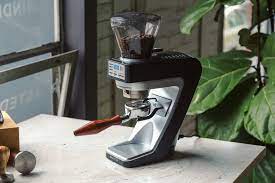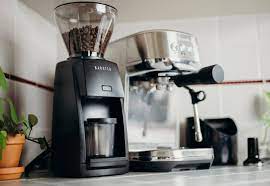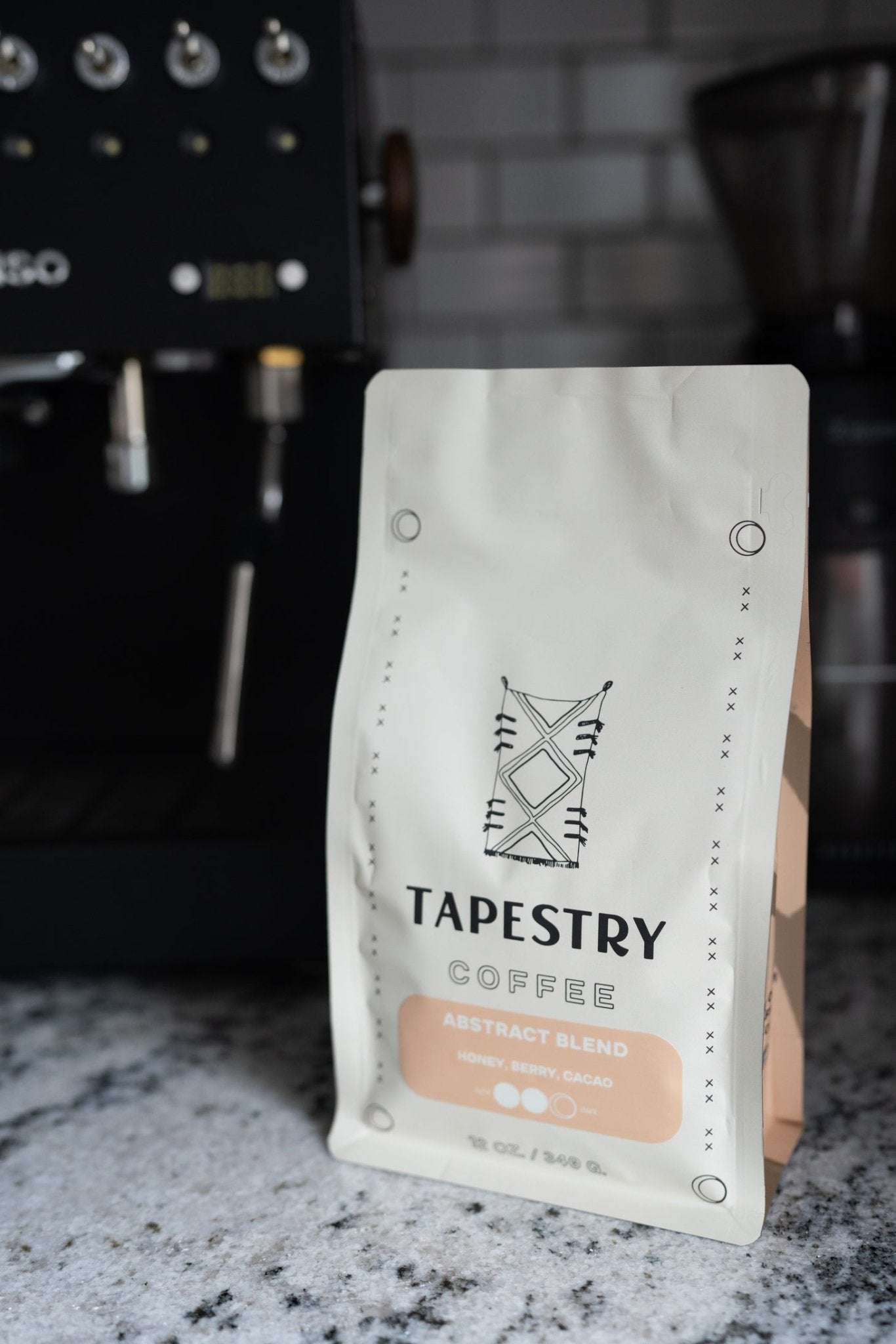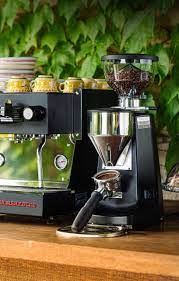
In the vast landscape of home espresso brewing, the pivotal role of selecting the perfect grinder cannot be overstated. The journey to crafting the ideal espresso shot is intricately linked to the precision of your grinder, influencing critical factors such as grind size, consistency, and the overall quality of your daily coffee ritual. In this exhaustive guide, we will thoroughly delve into the multifaceted world of home espresso grinders, meticulously exploring the key facets that significantly impact your daily coffee experience.
What to Look for in a Home Espresso Grinder

A. Precision Grind Adjustment
The crux of any outstanding espresso grinder lies in its ability to offer precise grind adjustments. Enter the Baratza Sette 270, a dominant force in this realm. Boasting a distinctive burr style, this grinder not only features a continuously adjustable dial, providing not just 270 settings but a nuanced fine-tuning capability for achieving the perfect espresso shots. We will meticulously dissect the innovative features and thoroughly discuss the pros and cons, providing profound insights into the user experience and overall performance.
1. Burr Style and Unique Features
The Sette 270's burr style and innovative features set it apart in the world of espresso grinders. We'll provide an in-depth analysis of its burr system and explore the unique features that make it a top contender.
2. Pros and Cons
No grinder is without its strengths and weaknesses. We'll weigh the pros and cons of the Sette 270, offering a balanced perspective for potential buyers.
3. User Experience and Performance
Understanding how the Sette 270 translates its features into a seamless user experience is crucial. We'll discuss real-world performance and user testimonials to provide a comprehensive overview.
B. Low Retention for Responsiveness
Responsiveness is a pivotal factor in achieving consistency in espresso shots. Grinders with low retention, such as the Baratza Encore ESP, shine in this department. We will delve into the significance of low retention in making immediate grind adjustments and how this impacts the overall user experience.
1. Importance of Low Retention
Low retention is a game-changer in the world of espresso brewing. We'll explore why it's crucial for achieving consistency and how it contributes to a responsive grind adjustment process.
2. Real-Time Adjustments
The real-time adjustments made possible by low retention grinders enhance the overall user experience. We'll provide examples and scenarios where this feature becomes paramount for enthusiasts seeking perfection in every shot.
C. Ease of Operation
For beginners entering the realm of espresso, user-friendly grinders like the Baratza Encore ESP become invaluable companions. With a dual-threaded grind adjustment collar and a dosing cup system, this grinder strikes a delicate balance between simplicity and performance. We'll delve into the features that make it a great choice for those embarking on their espresso journey.

1. Beginners' Perspective
From a beginner's standpoint, ease of operation is a determining factor. We'll discuss how the Encore ESP caters to beginners, providing a smooth introduction to the art of espresso brewing.
2. Dual-Threaded Grind Adjustment
The dual-threaded grind adjustment collar is a unique feature that enhances the user experience. We'll unravel how this mechanism works and its implications on achieving the desired grind for various brewing methods.
D. Consistency in Shot Production
Consistency is the holy grail of espresso brewing, and the Mazzer La Marzocco Lux D, a commercial-style grinder, excels in delivering shot after shot with unwavering precision. We'll unravel the features that make this grinder a favorite among espresso enthusiasts seeking expert-level consistency.
1. Commercial-Style Features Explained
The Lux D's commercial-style features contribute significantly to its consistency. We'll break down these features and explore how they elevate the grinder's performance to professional levels.
2. Pros and Cons
Even in the realm of commercial-style grinders, trade-offs exist. We'll illuminate the pros and cons of the Lux D, giving potential buyers a detailed understanding of what to expect.
3. Expert-Level Performance
For espresso enthusiasts seeking expert-level consistency, the Lux D delivers. We'll explore how its heavy-duty motor and continuous adjustment collar contribute to an unparalleled espresso experience.
E. Quality Coffee Extraction
Ultimately, the goal of any espresso grinder is to facilitate the extraction of high-quality coffee. We'll discuss the nuances of coffee extraction, exploring how each grinder contributes to the flavor profile of your espresso shots.
1. Impact of Grind Size on Flavor
Grind size plays a pivotal role in coffee extraction. We'll delve into how the various grinders discussed impact flavor by influencing grind size and extraction dynamics.
2. Coffee Bean Varietal Considerations
Different coffee beans require different extraction approaches. We'll explore how the featured grinders accommodate various bean varietals, contributing to the diversity of flavors in your espresso shots.
3. Brewing Variables and Their Influence
Variables such as humidity, coffee type, and machine compatibility can significantly influence the brewing process. We'll provide insights into how each grinder adapts to these variables, ensuring a consistent and delightful espresso experience.
Testing Methodologies
In our pursuit of uncovering the best home espresso grinders, we employed rigorous testing methodologies. From grind performance and consistency tests to usability and cleanup evaluations, our comprehensive approach aimed to provide readers with an authentic understanding of each grinder's capabilities.
A. Grind Performance Test
Our grind performance test involved dialing in an espresso blend and a single-origin coffee on each grinder. We adjusted the grind to pull a shot with a precise coffee-to-water ratio, tasting and making adjustments to enhance flavor. We'll share the results and insights gained from this crucial testing phase.
B. Consistency Test
Pulling five shots back-to-back, we meticulously noted dose, output, and time for each grinder, assessing their consistency. This section will provide an in-depth analysis of how each grinder fared in maintaining precision and consistency during consecutive shots.
C. Usability and Cleanup Tests
Over two weeks of regular use, we evaluated the simplicity of operation, ease of grind adjustment, programmable settings, and cleanup processes for each grinder. Real-world usage scenarios will be explored to provide readers with practical insights into the day-to-day experience of owning and using these grinders.
Exploring Espresso Grinder Types
Understanding the fundamental differences between espresso grinders and standard burr grinders is crucial for making an informed decision. We'll delve into the intricacies of espresso grinders, exploring their distinct features and how they cater specifically to the needs of espresso enthusiasts.
A. Espresso Grinder vs. Standard Burr Grinder
To demystify the distinctions, we'll provide a clear comparison between espresso grinders and standard burr grinders. We'll explain why espresso grinders are essential for achieving the fine grind required for espresso shots and how standard grinders fall short in this regard.
B. Burr Style Matters
The debate between conical burrs and flat burrs often influences grinder preferences. We'll unravel the myths and realities surrounding burr styles, exploring whether conical or flat burrs truly make a significant difference in flavor and performance.
The Best Espresso Grinders: Unveiling the Winners
After meticulous testing and analysis, certain espresso grinders emerged as champions in their respective categories. We'll unveil the winners, providing detailed insights into what makes each grinder stand out.
A. The Best Espresso Grinder: Baratza Sette 270 Conical Burr Grinder
In this section, we'll elaborate on why the Baratza Sette 270 earned the title of the best espresso grinder. We'll delve into its unique features, user experience, and overall performance that propelled it to the top spot.
B. The Best Espresso Grinder for Beginners: Baratza Encore ESP
For those venturing into the world of espresso brewing, the Baratza Encore ESP shines as the best grinder for beginners. We'll explore how its user-friendly features, grind adjustments, and dosing cup system make it an ideal choice for novices.
C. The Best Espresso Grinder for Experts: Mazzer La Marzocco Lux D
Experts seeking the pinnacle of consistency and performance found their match in the Mazzer La Marzocco Lux D. This section will elaborate on why it earned the title of the best espresso grinder for experts, providing a comprehensive understanding of its capabilities.
The Competition: Exploring Alternatives
While our winners shone brightly, it's essential to consider alternative options in the market. We'll discuss other contenders such as the Breville Smart Grinder Pro, Baratza Vario W+, Rancilio Stile, and Fellow Opus Coffee Grinder. By evaluating their strengths and weaknesses, readers can make informed decisions based on their specific needs.
Frequently Asked Questions
Addressing common queries surrounding espresso grinders, this section aims to provide clarity on crucial aspects. From choosing the right grinder for espresso to the impact of grind size on flavor, we'll answer questions that often arise during the selection process.
A. Which Type of Grinder Is Best for Espresso?
We'll guide readers in determining the best type of grinder for their espresso needs. Whether it's the precision of espresso grinders or the convenience of alternative options, this section will aid in making an informed decision.
B. Standalone Grinder vs. Espresso Machine with Built-in Grinder
The dilemma of choosing between a standalone grinder and an espresso machine with a built-in grinder is common. We'll dissect the pros and cons of each option, helping readers navigate this critical decision.
C. Grinding Espresso Beans in a Regular Coffee Grinder
For those curious about the compatibility of espresso beans with regular coffee grinders, we'll provide insights into the potential challenges and compromises involved in using a non-specialized grinder for espresso blends.
D. Difference Between Espresso Grind and Regular Grind
Understanding the disparities between espresso grind and regular grind is fundamental. We'll break down the characteristics of each grind size, highlighting their unique roles in various brewing methods.
E. Importance of an Espresso Grinder
Clarifying the significance of dedicated espresso grinders, this section will elucidate why standard coffee grinders often fall short for espresso brewing. Readers will gain a profound understanding of the precise requirements an espresso grinder fulfills.
F. Budget Considerations for Espresso Grinders
Delving into the financial aspect, we'll guide readers on how much to invest in an espresso grinder. By exploring the pricing spectrum and corresponding features, readers can align their budget with their desired level of espresso precision.
Conclusion
As we conclude this comprehensive exploration of home espresso grinders, readers will be armed with a wealth of knowledge to make an informed decision. Whether you're an aspiring home barista or a seasoned coffee connoisseur, the right espresso grinder can elevate your daily coffee ritual to unprecedented heights. Embrace the world of precision, consistency, and rich flavors as you embark on your journey to discover the best home espresso grinder tailored to your unique preferences.


